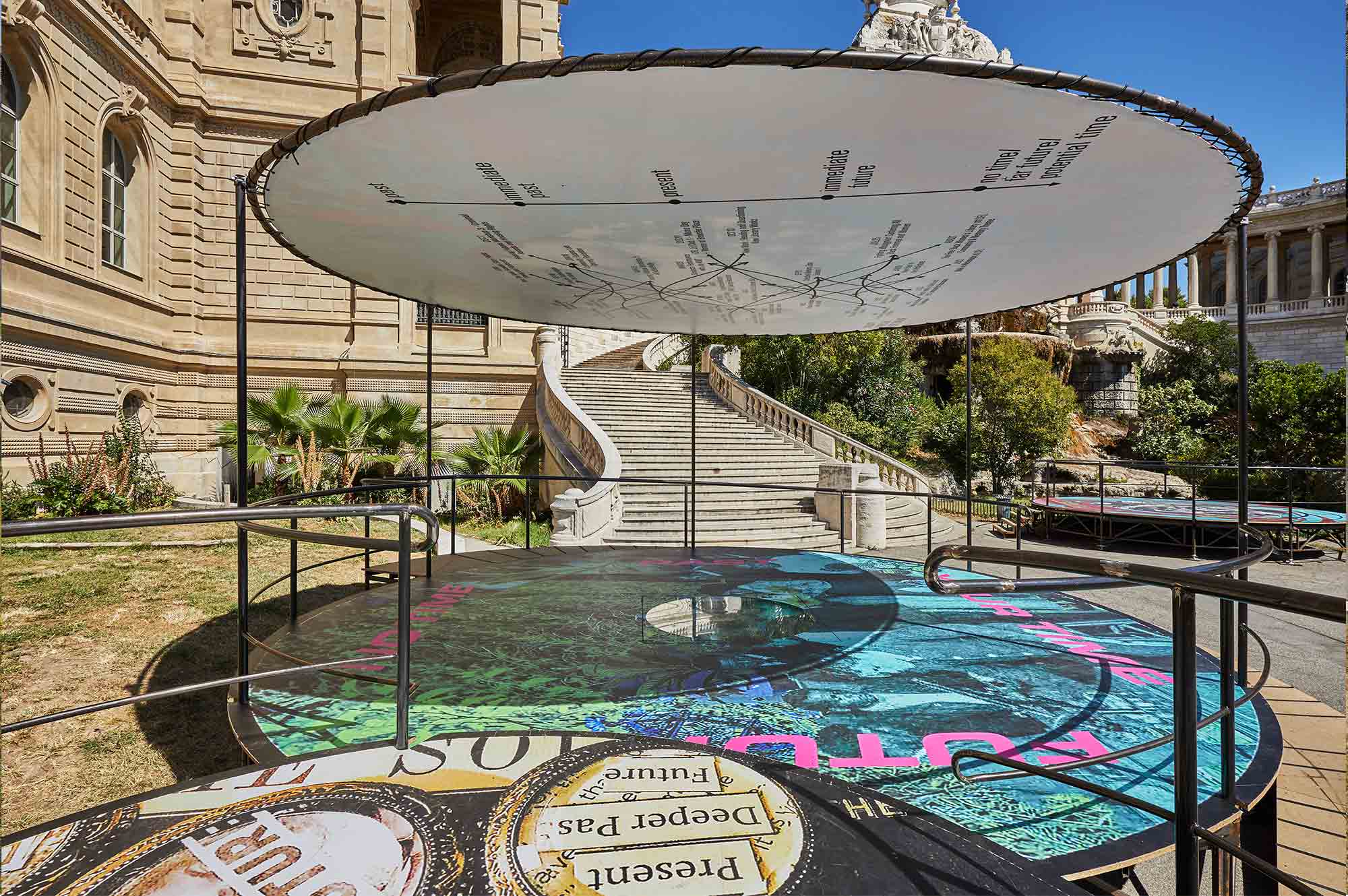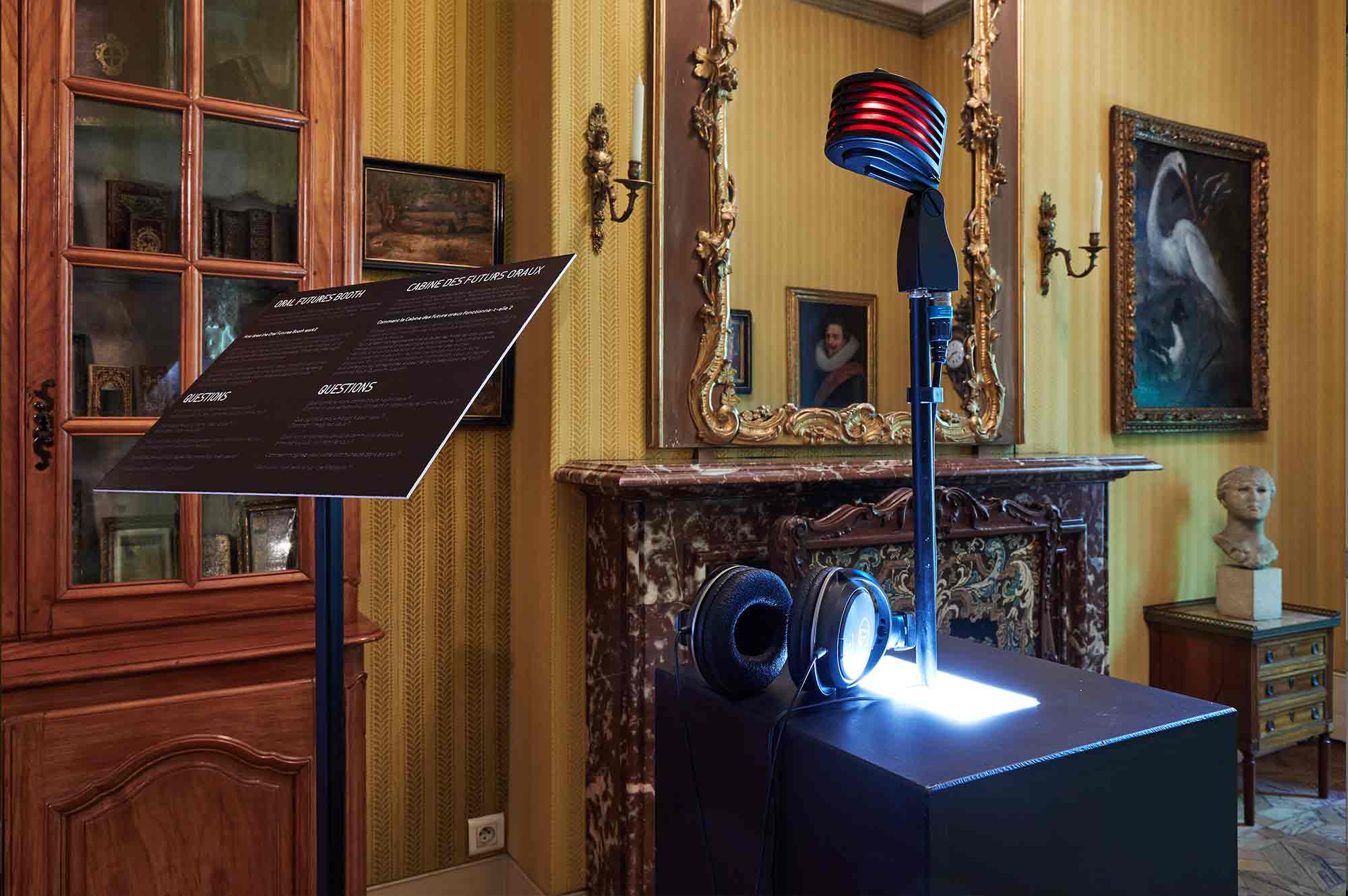Black Quantum Futurism is an interdisciplinary collaboration between Camae Ayewa (US) and Rasheedah Phillips (b.1984, US) that uses writing, music, film, visual art, socially engaged art and creative research to explore personal, cultural, familial and communal cycles of experience as well as solutions for transforming oppressive linear temporalities into empowering, alternative temporalities. Their work focuses on the recovery, collection and preservation of communal memories, histories and futures. They use Afrofuturism as a tool for telling stories of marginalised people, exploring the nature of their collective reality and inspiring agency in marginalised people to shape and reshape their own pasts and futures. Because of the continued erasure of their families, roots, histories, and very futures, they make their work accessible, intersectional and mobile, eluding the bounds of space-time that normally imprison art.
At Grobet-Labadié
Black Quantum Futurism (Collective, US), Oral Futures Booth, 2020
Sound recording booth
Commissioned by Manifesta 13 Marseille
Supported by Ammodo
Courtesy of the artist
Led by US musician Camae Ayewa and advocate and artist Rasheedah Phillips, Black Quantum Futurism develops and expands the legacy of Afrofuturism – a movement that considers Black history alongside Afrodiasporan notions of time and the future. In Alexandre Labadié’s former office, Black Quantum Futurism has installed a small sound station that functions as both a recording booth and an audio archive. Prompted by a brief questionnaire, visitors are invited to record their own visions for the futures of housing, land and public space in Marseille. At the same time, the booth offers memories of housing and land that may have been erased or are at risk of being erased from public memory.
At Park Longchamp
Black Quantum Futurism (Collective, US), Nonlinear Histories & Quantum Futures, 2020
Installation with interactive element
Interaction design by Studio MAACUMBA
Commissioned by Manifesta 13 Marseille
Supported by Ammodo
Courtesy of the artist
Outside the Palais Longchamp, there’s a curious piece of architecture, seemingly from a different time and place. Consisting of three entangled circles, this sculpture come stage was designed using cosmograms – simple geometric systems for depicting the cosmos found in various cultures throughout the world. Conceived as an interactive space, it responds to each visitor’s movements through a series of dials, synchronising individual and collective movements through time. Installed for the duration of Manifesta 13 Marseille, this platform gives voice to varying temporalities, spatialities and identities.
* Work conceived for the occasion of Manifesta 13 Marseille











